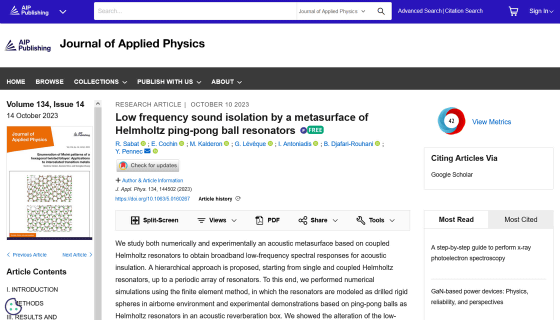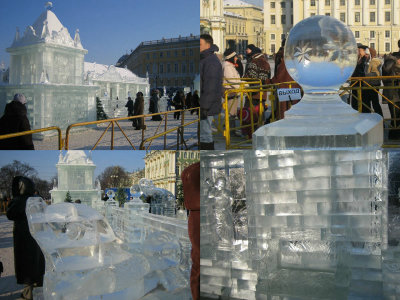Research results show that arranging a large number of ping pong balls can be used as a 'sound absorbing material' to block noise

If you live in a city, near a highway, or an airport, you may be bothered by a variety of low-frequency noises emitted by cars and airplanes. Research results have been announced that ``ping pong balls'' used in table tennis can be used as a sound absorbing material to prevent such noise.
Low frequency sound isolation by a metasurface of Helmholtz ping-pong ball resonators | Journal of Applied Physics | AIP Publishing

Pingpong Balls Score Big as Sound Absorbers - AIP Publishing LLC
https://publishing.aip.org/publications/latest-content/pingpong-balls-score-big-as-sound-absorbers/
Scientists Find an Awesome Practical Use For Ping Pong Balls : ScienceAlert
https://www.sciencealert.com/scientists-find-an-awesome-practical-use-for-ping-pong-balls
It has been pointed out that noise is not only a nuisance, but can also lead to health problems such as headaches, dizziness, hearing loss, hypersensitivity to sound, and neurosis. It is also known that noise from airplanes and trains can cause serious damage tothe cardiovascular system , so ways to prevent noise are important for maintaining physical and mental health.
However, low-frequency noise is caused by various factors, and compared to high-frequency noise, it is difficult to be blocked by walls and structures, so it is more difficult to prevent sound. Additionally, effective sound-absorbing materials are often expensive and in some cases difficult for the general public to obtain.
Therefore, a research team from the University of Lille in France and the National Institute of Technology of Athens in Greece developed a sound-absorbing material that effectively blocks low-frequency noise using easily available ``ping pong balls''. Robin Sabato, a physicist at the University of Lille, said: 'Ping-pong balls are well-known, familiar objects and exist in large numbers all over the world. Our motivation was to use these easily accessible objects to was used to create a low-frequency insulated panel structure.'

The research team used a ping pong ball as a type of
The Helmholtz resonator not only makes sound, but also absorbs the kinetic energy of the sound, mainly from the resonating sound, and cancels the sound, and this can be used as a sound-absorbing material . In fact, the principle of the Helmholtz resonator is apparently used in perforated boards, sound-absorbing panels, tire grooves , etc. that are pasted in music rooms, etc.
So the research team made a kind of Helmholtz resonator by cutting small holes in ping pong balls, and arranging them in specially designed containers to create sound-absorbing material. Five holes (openings) with a diameter of 2 mm were made in the ping pong ball, and each hole was placed so that it connected with the opening of the adjacent ping pong ball.

The container designed by the research team looks like this. The research team calls the sound-absorbing material lined with ping-pong balls ``Acoustic metasurfaces.''

The research team reported that connecting multiple ping pong balls created more resonant frequencies, which resulted in more sound absorption. It was also confirmed that the acoustic properties of the acoustic metasurface can be changed by adjusting the number of ping pong balls, the number of holes, and the size of the holes.

'Helmholtz resonators have the unique ability to precisely capture surrounding sound waves at their resonant frequencies, and can be described as a cavity connected to the environment through a thin neck,' said Sabato. The originality is that we took into account the effects of coupling between the two resonators and generated two resonant frequencies.'
The newly developed acoustic metasurface has the potential to be applied not only to sound-absorbing materials but also to a variety of acoustic-related applications.
Related Posts:
in Science, Posted by log1h_ik







